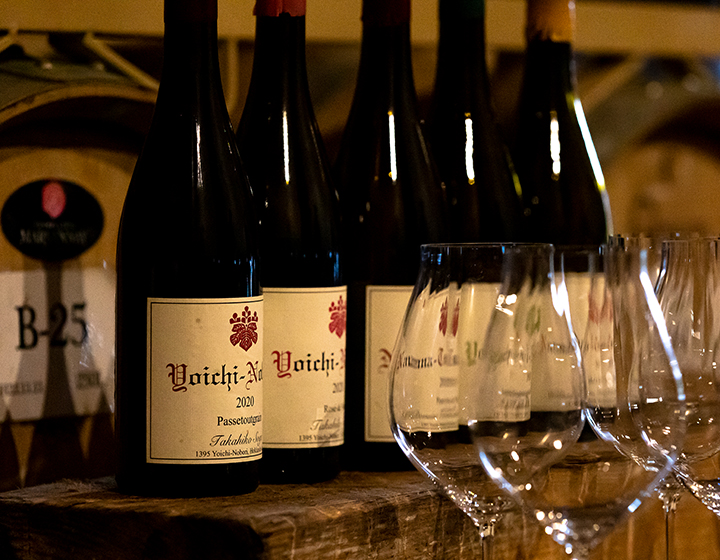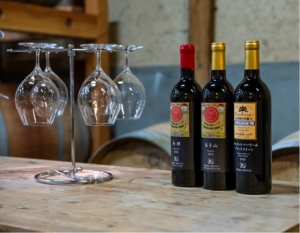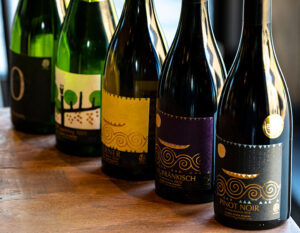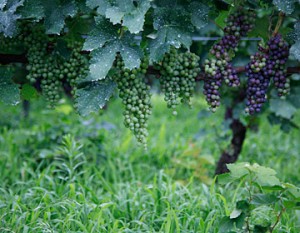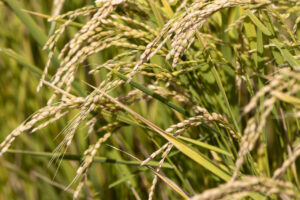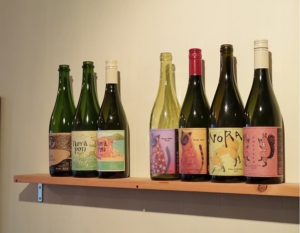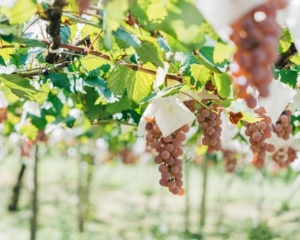Nanatsumori Pinot Noir from Domaine Takahiko is recognized around the world and enthusiastically received by wine lovers in Japan. It is carefully produced with a limited harvest and is called “fantastic wine” because of its high quality and rarity. The representative of the company, Takahiko Soga, explains the identity of winemaking and Japanese wine.
Where the world-renowned “Nanatsumori” is produced
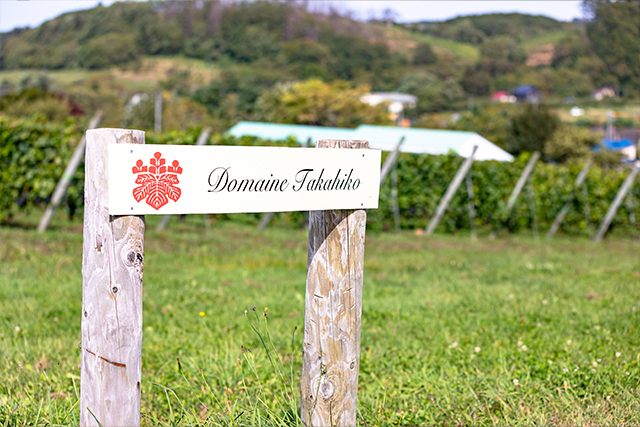
Yoichi Town is located in the western part of Hokkaido. The town, along with Shakotan Peninsula and Otaru, prospered from herring fishing and has been a major apple-growing area since the Taisho era (1912-1926), taking advantage of its relatively mild climate, temperature difference between day and night, and light rainfall in summer. In the early 1970s, during Japan’s period of rapid economic growth, the liberalization of imports of foreign wines triggered the first wine boom in Japan. German wines were widely consumed at the time, and an increasing number of companies from Japan went to Germany to learn winemaking. In 1984, Yoichi began full-scale production of grapes for wine, and this is where the history of Yoichi wine began.
Established in 2010, Domaine Takahiko has 4.6 hectares of vineyards (2.5 hectares planted) and a small winery in a converted barn. Takahiko Soga, the representative of the company, purchased the farmland, which was planted with seven kinds of fruit trees including apple, chestnut, plum, and prune. He cultivated the land from scratch and began growing grapes.
I wanted to leave to posterity that this was a forest of seven fruit trees, so I named my wine ‘ Nanatsumori,'” says Soga.
Takahiko’s wines, carefully produced using organic farming methods that do not use any chemical fertilizers or pesticides, have been highly acclaimed both in Japan and abroad, and in 2020, Nanatsumori Pinot Noir 2017 became the first Japanese wine to be selected for the wine list of the world’s No. 1 restaurant, NOMA.
Grape Cultivation Utilizing Hokkaido’s Potential
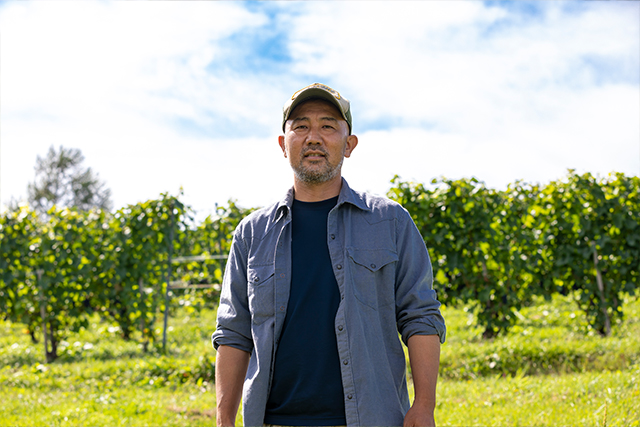
In fact, in the genre of vinifera grapes (a grape variety exclusively used for wine), Yoichi has been the largest producer in Japan on a municipal basis for 40 years, but this fact is not well known. Until then, there was only one winery in Yoichi. Until then, the grapes grown in Yoichi were shipped to Hakodate City and the Tokachi region within Hokkaido, to Yamanashi and Tochigi prefectures outside of Hokkaido, and to major wineries as far away as Okayama Prefecture. Almost 100% of the grapes were shipped out of town. This is thought to be one of the reasons why Yoichi was not recognized as a famous wine grape producing area.
For decades, no one (except a few people) knew about the high potential of Yoichi grapes.
One of the first to recognize the potential of Yoichi grapes was Mr. Soga, who at the time was the farm manager of Coco Farm Winery (Ashikaga City, Tochigi Prefecture). While traveling around Japan looking for a place to set up his own winery, he was surprised by the potential and quality of the grapes grown in Yoichi and made up his mind to make wine in this area.
Falling in love with Pinot Noir
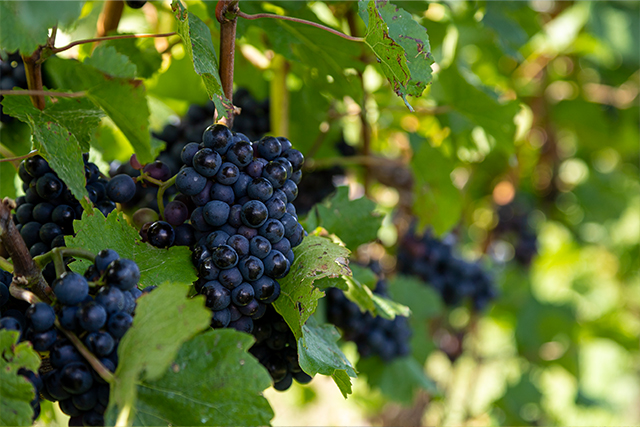
Currently, Domaine Takahiko grows only one variety of grape, Pinot Noir. Before starting Domaine Takahiko, Mr. Soga thought it would be difficult to grow Pinot Noir in the hot, humid, and rainy environment of Japan. However, he changed his mind when he came across Pinot Noir grapes grown by Koji Kimura of Kimura Noir Farm, who is considered the leading Pinot Noir grower in Yoichi.
After learning about Mr. Kimura’s Pinot Noir, I thought, “If this place can produce such high quality Pinot Noir, I would like to try my hand at making wine using Pinot Noir, which I had always longed to do.”
Yoichi is relatively warm and has little precipitation, even in Hokkaido, due to the influence of warm sea water. The special topography of the region, surrounded by capes and mountains, protects the fruit trees from sea breezes and strong winds, and the dry winds blowing in from the foot of Mount Yotei reduce the incidence of disease. The dry winds blowing in from the foot of Mt.
Mr. Soga describes Pinot Noir as having a “berry-like strawberry” and “a very gentle taste. If you think of Cabernet as spicy and dark with strong tannins, Pinot Noir has a gentle and charming taste. The complexity of flavor can be expressed easily, which I think is ideal for making wines that marry with Japanese food, which is what I am aiming for.
The ideal soil is “mountain soil.
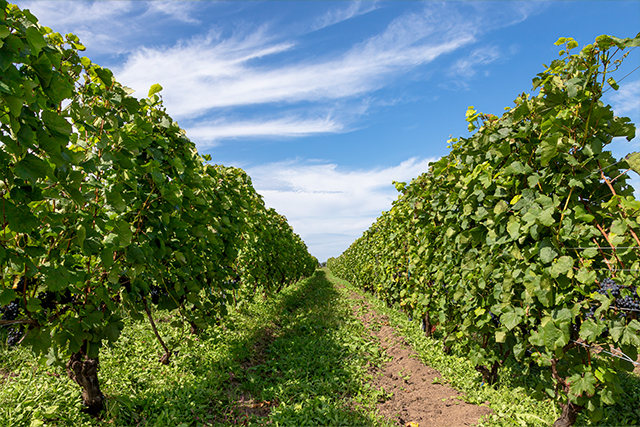
2.The 8-hectare vineyard is lined with 9,000 Pinot Noir vines, and weeds grow thickly at the base of the trees. In soil preparation, which greatly affects the taste of wine, Mr. Soga aims for ” mountain soil. Even though the mountains are covered with stones, healthy trees grow and mountain grapes grow in abundance. Trees grow in a way that suits the soil, and leaves fall to the ground, decompose, and become fertilizer by the power of nature. The idea of organic farming is to reproduce this cycle in the field. Instead of adding excessive amounts of compost, weeds are allowed to grow and the soil is strained to maintain as natural a state as possible.
Another thing that Mr. Soga believes is important is to keep the soil soft. In Hokkaido, the weight of snow tends to harden the soil due to the accumulation of snow, so it is necessary to make the soil softer by tilling.
Delicate flavor produced by traditional brewing
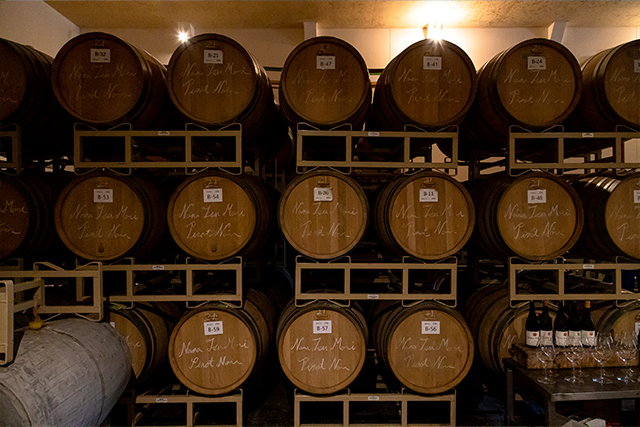
Domaine Takahiko’s wines are also characterized by their vinification method. Generally, the harvested grapes are destemmed (i.e., the parts of the grapes other than the fruit, such as the berries and stems, are removed) before vinification. In contrast, the whole bunch of grapes is vinified without destemming, which has been practiced since ancient times, and Domaine Takahiko uses the latter method. Hokkaido, with its moderate rainfall and abundant forests, is a “microbe powerhouse. Mr. Soga believes that “whole bunch vinification,” in which fermentation proceeds slowly with the involvement of various microorganisms, is the best method for making wine in this region.
Communicating Japan’s Identity
Currently, more than 95% of the wine distributed in Japan is imported, and only 5% is domestically produced. If the market share were the other way around, Japanese wineries would have to aim for global wines. Right now, they can still focus on the domestic market. That is why, says Mr. Soga, we need to pursue flavors that can only be expressed by Japanese water and soil, and make wines that fit in with Japanese food, which Japanese people find delicious.
The trigger that started him thinking about this was a bottle of wine.
In wine making, I used to pursue fruitiness, power, and tannin, but to be honest, I was feeling a little limited. I also wondered if this was the kind of wine I wanted to drink from the bottom of my heart. I also wondered if this was the kind of wine I wanted to drink from the bottom of my heart. Then I had a chance to taste a wine made by Pierre Auvernoy, who has been making natural wine (vin naturel) since the 1970s in the Jura region of France, and I thought, “Is this the kind of wine I want to drink from the bottom of my heart? It has a dashi-like flavor and lingers forever. I thought that this dashi-like flavor was the kind of Japanese wine we should be aiming for.
Umami” produced through organic cultivation

Expressing the uniquely Japanese flavor of umami in wine is also a reflection of Japan’s climate through wine. In Japan, where it rains a lot, grapes absorb moisture and tend to develop a delicate taste. Furthermore, the volcanic clay in this region is rich in organic matter and slightly acidic, which facilitates the activation of microorganisms and increases the amino acid content. Mr. Soga believes that organic farming, rather than conventional farming that uses large amounts of pesticides, can increase the amino acid content in the soil and give the grapes and wine a delicious flavor.
I want to express an aroma that, when you taste it, reminds you of your hometown, not France, Italy, or America, but the natural landscape of Japan,” he said. For example, if a wine is described as ‘like a Chardonnay from Burgundy,’ it is not a uniquely Japanese wine.
In fact, Domaine Takahiko’s wines are praised by connoisseurs for their ” rich umami” and ” delicate breadth, reminiscent of soup stock.
The Future of Domaine Takahiko
Since 2011, when the Liquor Tax Law was deregulated through the approval of a special zone, wineries have been established one after another in Yoichi. Well-known among wine connoisseurs are Atsuo Yamanaka of “Domaine Mon” and Atsuyuki Suzuki of “Domaine Atsushizuki,” who learned winemaking under Mr. Soga and have since set up their own wineries.
Better to have 100 wineries in Yoichi than to have a large scale
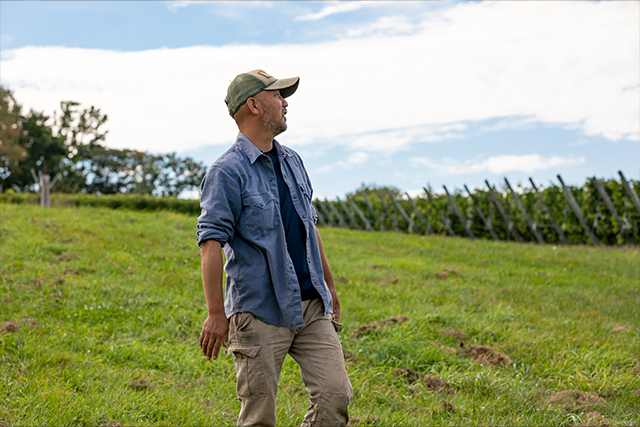
Currently, there are about 23 wineries gathered in the Yoichi area, and Mr. Soga predicts that the number will continue to increase. Many people have asked Soga to increase the number of shipments of his wines, but he has no plans to expand his vineyards and increase the amount of harvest. There is no point in increasing the volume of shipments and having me alone say, ‘This is what Japanese wine is all about! It is meaningless for me to insist, “This is how Japanese wine is made! I believe that if new wineries create their own wines based on a common understanding of Japanese wine, a new wine culture will begin in this town.
To continue to make delicious wine for the next generation and to show them how it is done behind the scenes. Mr. Soga’s way of thinking about winemaking is linked to creating the future of Japanese wine and preserving the nostalgic yet rich Japanese food culture for the Japanese people. The role of “Domaine Takahiko” may be to continue to lead the Japanese wine scene.



